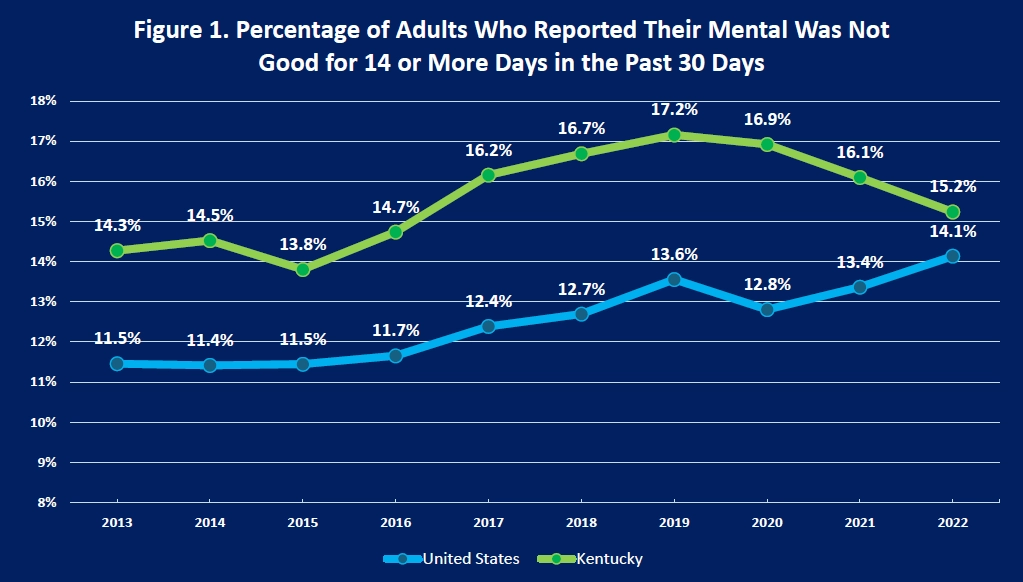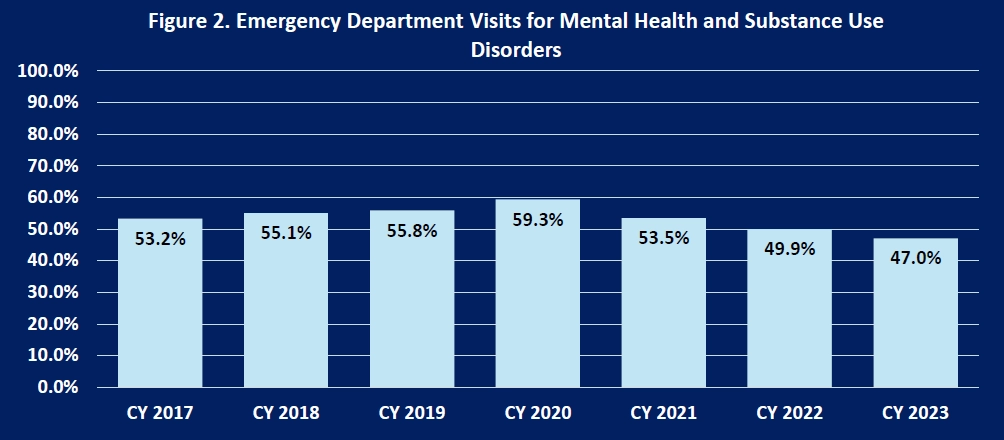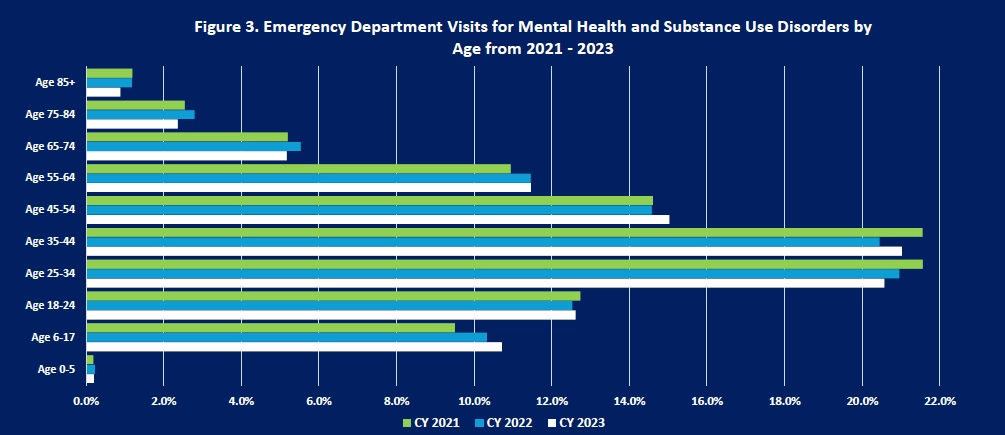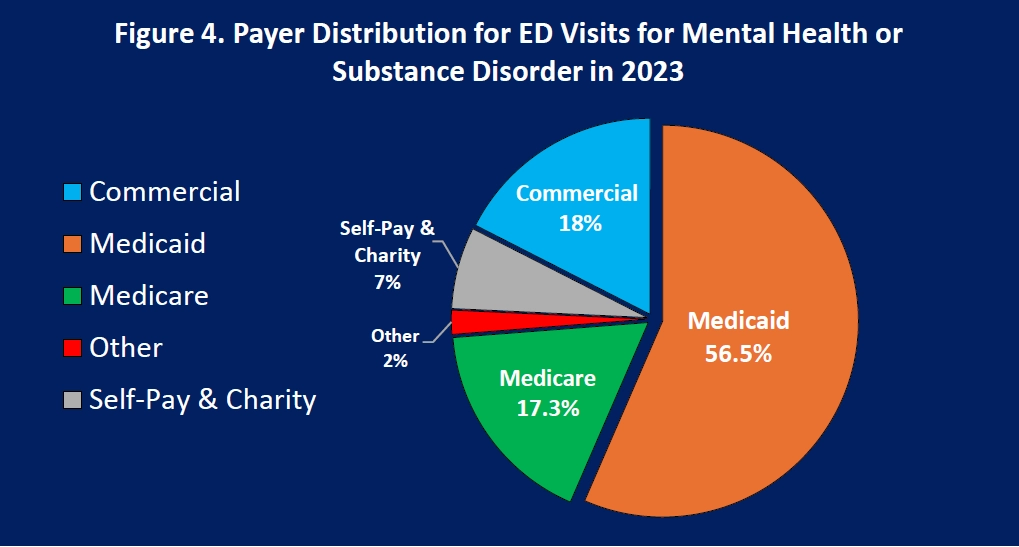Kentucky’s Persistent Mental Health Crisis
The Effects on Hospital Emergency Departments
Mental health and substance use disorder (SUD) are persistent issues nationally and in Kentucky. Hospitals, especially their emergency departments (ED), offer crisis treatment and a path to recovery and symptom management. In an earlier report, similarly titled Kentucky’s Growing Mental Health Crisis (2021), we documented the unprecedented circumstances of the COVID-19 pandemic and its resulting crisis of mental illness and SUD.
According to an analysis by the Kaiser Family Foundation (KFF), using data from the Centers for Disease Control and Prevention’s (CDC) Behavioral Risk Factor Surveillance System (BRFFS), Kentucky, while well above the national average, has recently seen an improvement in the percentage of adults who report their mental health was not good for 14 or more days over the past month. Figure 1 shows the national trends and those for Kentucky from 2013 through 2022, the most recent publicly available data. Over the past ten years, Kentucky has had an above average rate of poor mental health. The highest rate was reported in 2019, approximately 17.2 percent, and largely remained the same in 2020. Thereafter the rate declined by about one percentage point each year but remains higher than the national rate in 2022, 15.2 percent in Kentucky compared to 14.1 percent nationally.

Data Source: Centers for Disease Control and Prevention (CDC)
Although it remains below pre-pandemic levels, the number of ED visits has increased by approximately 18 percent over three years from 2020 to 2023 (data not shown). However, the share of mental health and SUD diagnoses for ER visits has declined. Figure 2 shows the highest rate of mental health SUD diagnoses, 59.3 percent, in 2020, followed by lower rates in subsequent years. The first year of the pandemic is especially poignant; while there was an artificially lower number of ED visits in 2020 due to COVID-19 restrictions, there was a higher share of patients with mental health and SUDs. Every year since 2020, emergency departments reported about 1.1 million diagnoses of either mental illness or substance use disorder.

Kentucky hospitals report a larger share of children and adolescents affected by mental health and SUD in the ED (Figure 3). The percentage of children and adolescents aged 6 – 17 with a principal diagnosis of mental health or substance disorder has increased from 9.5 percent in 2021 to 10.7 percent in 2023, an increase of 13 percent. In 2023, more than 8,700 children and adolescents sought care in the ED for mental health and SUD.

Data Source: KHA InfoSuite
Medicaid pays for the majority of mental health and SUD treatment in the ED (Figure 4). Nearly 57 percent of all ED visits with a principal diagnosis of mental health or SUD are paid by Medicaid, and another 17 percent by Medicare, meaning that almost three-quarters of these visits in Kentucky hospitals are for beneficiaries in government programs.

Data Source: KHA InfoSuite

988 is Up and Running in Kentucky
Kentuckians in crisis can now connect with suicide prevention, mental health, and substance use counselors using a nationwide, easier-to-dial phone number – 988. Phone service providers will now direct 988 calls to the existing national lifeline with its 13 Kentucky call centers. And connection to additional crisis services will be provided if necessary.
Questions?
Maik Schutze
Director, Health Information & Analytics
Kentucky Hospital Association
502-992-4316


